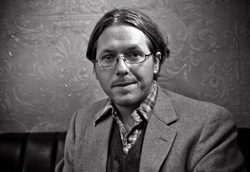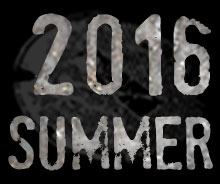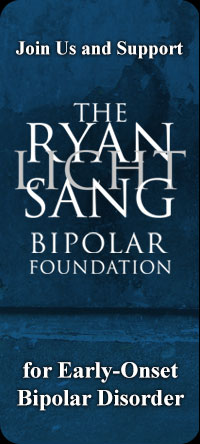

By Jay Fox
Brooklyn, NY, USA

Jay Fox
There are no limits to consumption — Jean Baudrillard
Nursing a glass of scotch is a fine way to find yourself as Saturday night drifts into Sunday morning. So much the better if you feel as though you've consumed your weight in beer and bulgogi—which, on this particular night, was the case. Even better still if you're only a few hundred feet away from where you'll be sleeping, as extreme indulgences in booze and meat will send even the most valiant of drinkers into the arms of Morpheus. But not before a nightcap.
In this instance, the last line to be checked off on the laundry list of the day's indulgences happened to be China Bar (133-48 37th Avenue, Flushing), a multi-level establishment in Flushing that is one part lounge, one part karaoke joint and (apparently) one part secretive, basement raw bar. This was unfamiliar territory for me. This was Queens.
Before we get to the bar, however, it's important to understand a few things about Flushing. It may not be the most isolated neighborhood in the city, but it is about as far from a central location that you can get without landing in City Island. You may wonder just how far we're talking. Let's put it this way. It is a few miles east of LaGuardia Airport and a subway stop past what many consider to be the end of Queens—Citi Field. It's not the type of place you just stumble upon, nor is it the type of place where you and your friends meet up for happy hour on a Tuesday. New Yorkers can go their entire lives living within the five boroughs and very easily never once step foot in the neighborhood. In fact, it is so far removed from most of the other parts of the city that you may want to check into a hotel if your night goes a little long and you don't think you'll be able to stay awake for the entire homeward journey via subway. That drunken cab ride home may cost you more than the room.
It's not just distance that separates Flushing from much of the city. The separation is cultural, too. Arriving in Downtown Flushing can feel like you've taken a voyage to another continent, even if it's located at the end of the 7 train (a/k/a The International Line). Much like Brooklyn's Brighton Beach, which is so ethnically Russian that it is in imminent danger of being annexed by Putin, Flushing is neither a tourist destination nor a place to go on a walking tour that focuses on the history of immigration in New York City. This is because history is being made there as we speak, and its tongues of choice are Mandarin and Korean.

China Bar (Flushing)
While there are certainly first- and second-generation immigrants in Flushing, the area is a magnet for new arrivals from East Asia. And by new, I mean still struggling with both the rudiments of English and the basics of American traffic laws. While visiting Flushing, you will almost be taken out by a motorized bike (which is not a motorcycle, but, rather, what appears to be the consequence of an unholy union between a lawnmower and a Huffy); you will be able to go several hours without hearing a European language; you will be bombarded by fliers written in a language that you don't understand and handed out by people who may not understand it either; and you will wonder quite often, usually in delight but occasionally in horror, What is that smell?
Flushing has not been whitewashed. Most of this part of Queens hasn't been. It has not been altered or cleaned up to accommodate Mets fans or visitors to the Queens Zoo, the Botanical Gardens or any of the underappreciated attractions in Flushing Meadows (which is evidently not part of Flushing). Looking for further proof? Check out the area that sits just east of Citi Field and just to the west of Downtown Flushing: Willets Point. Instead of a section of town that's been rejuvenated by the new ballpark, it is a 62-acre cornucopia of dilapidated light industrial buildings, questionably legit body shops and abandoned streets that would have to be spruced up to be used as the set of a RoboCop sequel. As of 2014, the population of this area, which is sometimes referred to as the Iron Triangle, was 1. That's not a typo. One guy lives there. His name is Joseph Ardizzone.
Though development may be coming to Willets Point, and though Flushing is experiencing something of a construction boom and an influx of some wealthy residents, it is not being gentrified in the same way that so much of Brooklyn is. The buildings emerging from the numerous construction sites are not exclusively luxury condos, but structures to house the continuous stream of immigrants who are using the neighborhood as something of a way station. If you like to complain about how New York City is turning into one big shopping mall where everything looks the same and all of the edges that have for decades made the city unique have been smoothed out, take a walk down Flushing's primary artery, Main Street. Depending on your tolerance for people who have no respect for personal space, it will either be a thrilling cultural experience or a descent into madness. Be warned, though, the intersection of Roosevelt Avenue and Main, in particular, is like Shangri-La for frotteurs.
This is the allure of Flushing. It is completely different from the rest of the city. Unlike hipster Brooklyn—which has become overwhelmed by insecure and judgmental creatives from the Midwest who create not for themselves but for the major corporations that they inveigh against as they proclaim themselves to still be feeling the Bern over a brunch that consists of free-range eggs, local greens and artisanal cheese—it is still affordable for working class families. Unlike Little Italy—which is equal parts a relic, a celebration of a romanticized version of the mob, and a trap for clueless tourists who think that all Italian pasta is called spaghetti—it is an actual neighborhood. Unlike Manhattan's Chinatown, it is not packed with cookie-cutter souvenir stores that celebrate an idea of Chinatown that is, on the one hand, a fetishization of the exotic and, on the other, a perverse replica of the Chinese; it is just an economically diverse neighborhood inhabited by people from East Asia.
Which now finally brings us back to the bar, by which you must pass a group smoking cigarettes to the right of the entrance and a woman to the left, who is puffing on a vaporizer that produces dense clouds of fog and smells like candy or the kind of fruit-kissed body lotion that only a stripper would not find cloying, if you want to go in. What you will find upon entering is an interior that is completely antithetical to the reclaimed wood and Edison light bulb aesthetic that has come to define the Brooklyn establishments, that I visit with such regularity, that I was almost struck dumb. It was not a dive bar, and yet there was drywall. The liquor bottles were backlit in turquoise. There was no craft bourbon. The only beers on tap were Coors Light and Guinness. The hand soap in the bathroom was not a proprietary blend of essential oils and groovy botanicals. There were no white people in sight besides me and my girlfriend.
Once again, it was not a dive. I would really like to stress that because I was trying to figure out how to categorize it. It was neither a dive nor a lounge, nor was it trying to be ironic or defined by some pretentious narrative about its quirky owners who decided to quit the rat race in order to fulfill a life-long desire to open an establishment that celebrates community and the pursuit of making cocktails and dishes with only the finest and most unique ingredients. China Bar is just a place to socialize and have a few drinks. It doesn't need to make declarations about its dedication to bringing people together because it isn't an invasive entity trying to justify or camouflage itself, even if it has only been open for five years.
It is just a bar, I thought. More so than just about any other place I've been, this is just a bar. And I should have been comfortable to leave the thought alone at that. There was a nice sense of closure to that idea: Sincerity does not need to promote or justify itself. That's what makes it sincere.
Link:
Jay Fox at Stay Thirsty Publishing





